Has collaboration and Human Resources Management in your company also changed rapidly in recent years due to changes in the environment, society and technologies? The associated challenges are manifold and affect your HR department as well as all other business units. But one thing is always the same: the need for information has grown far beyond the classic organizational layout with its structure, hierarchy and descriptive employee data. You are probably all too familiar with the fact that it is no longer easy to provide timely information on HR issues, to receive a response, or to create management information. This is due to the increased complexity and speed, as well as the heterogeneous data landscape with data silos, multiple maintenance and tables. If you are in this situation and your Organizational Data Management or information system no longer meets all your requirements, there is a way out: implementing a Master Data Management solution. This allows you to seamlessly control and manage all sensitive organizational data centrally in one IT system (Enterprise Suite), creating the optimal conditions for digitization in your company.
Organizational data are assets
Regardless of the industry in which your company operates, your employees are the linchpin that keeps your business running. Accordingly, it is important for you to have clean and reliable organizational master data that contains both the information of the classic company structure and the data and relationships that go beyond it. The first step is to centralize your employee master data from heterogeneous sources so that you have a reliable, complete and consistent database. Access is controlled via rights down to individual attributes, so that everyone can only edit or see what they are allowed to. In the next steps, the previously hidden information potential is tapped by creating relationships, automatically generating the change history and finally using the interactive time scale for reports, analyses and exports. In this way, your organizational master data becomes what it actually is: Your most useful asset, giving you a 360° employee-centric view of your organization at the touch of a button to take data-driven action.
Data harmonization
At the heart of Master Data Management (MDM) is Goldright Enterprise Suite, the central IT system in which you consolidate, manage and, if necessary, edit your organizational master data for external and internal employees. It has flexibly configurable, bidirectional interfaces and a wide range of upload options, such as tables and all common file formats. This means that your data landscape remains as it is, and you decide for yourself whether to process entire data sets or only certain parts in the Enterprise Suite or in the previous source systems. You also have the option of transferring data to IT systems, such as for payroll accounting or the organizational directory on the intranet. The hub is always the organizational master data record defined by you, in which all relevant attributes and files from the data sources are mapped correctly, traceably and without contradictions. In this way, an employee-centric organizational structure with all relevant information is created. There are virtually no limits to your creativity, the Goldright Enterprise Suite maps data around flexible working models, employee management, training, signing authorizations, secondary tasks or even skills. In addition, configurable workflows, task and reminder functions are available for you to centrally control your individual processes and workflows, for example during onboarding, sabbatical, training, maternity leave or renewal of certificates. You control your organizational data at all times seamlessly and verifiably and as well comply with the EU GDPR and confidentiality obligations.
Data enrichment
After that, you refine your organizational master data records and create the organizational network where you map connections, dependencies and hierarchies. This way you can see your internal and external employees and the relationships with their environment in the company. In this way, you map what is important to you or used to be incidental, such as first responders, substitutes, cross-functional project teams, cost centers, locations, or even contact persons for specific topics. Internal and, if necessary, external collaboration around your employee master data can be regulated via custom-fit access rights and workflows. In this way, the Enterprise Suite provides you with a uniform and reliable database for your organizational master data, giving you and, depending on their access rights, everyone else a complete picture of your employees or colleagues with all relevant information.
Chronological data management
As soon as Organizational Data Management has been put into operation, all changes and new entries are automatically saved with a time stamp or validity. If you have forgotten an entry or want to do some preliminary work, simply enter it with “valid from” or “valid to”. Over time, a single time layer is created for each day in which the personnel master data, with all attributes, relationships and files, are mapped as they were at that specific time. This means that Enterprise Suite does not overwrite anything and you have the database to compare your organizational structure, business units or even employees over time. In addition, you can call up at any time where you have how many employees with a certain qualification, how many are sick or on vacation.
Time-stamped reporting system
The interactive timeline makes it easy for you to access data views for past, current or even future dates. With just a few clicks, you can call up the desired day and see your personnel master data, with all attributes, relationships and files, as they were on this specific date. This gives you a wide range of options to create individual reports, analyses and exports and, if necessary, to send them automatically. With the dashboard, you can graphically display your organization from different perspectives and create organizational charts with complex hierarchies, for example. At the touch of a button, you have a 360° view of your organizational structure and the knowledge you need to make data-driven decisions and take action.
What else Organizational Data Management can do.
With Goldright Enterprise Suite, you meet several goals at once. You have the data chaos under control and an IT system for organizational master data for which you previously had none, and yet remain flexible and agile in the long term. The flexibel data model can be adapted at any time or even extended to other business areas. Your data models, interfaces and reports can be adapted by qualified employees, or we can support you in the process. In addition, you have the option of integrating and connecting new IT systems and technologies at any time. This keeps you permanently flexible and creates the optimal conditions for driving digitization forward in your company. The basis for this is clean and reliable master data, because without this it is hopeless to digitize your identity management or invoice approvals cleanly, for example.




